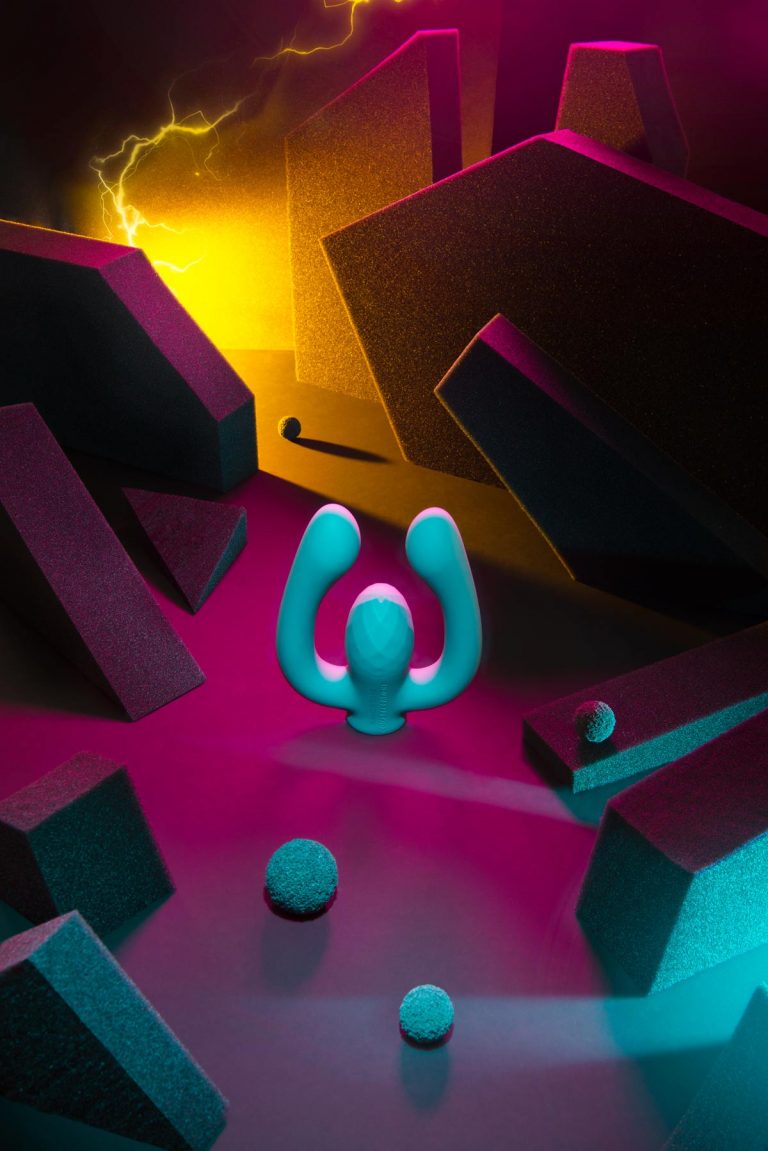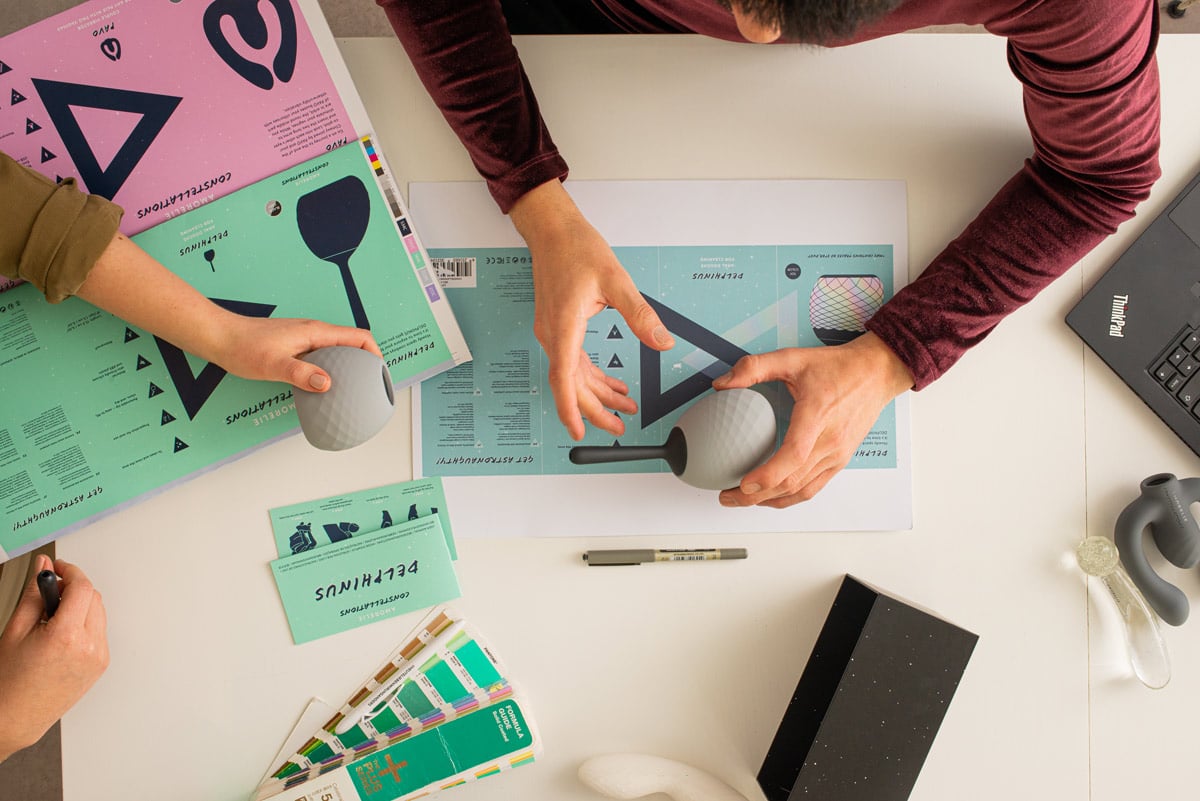
Opinion
Constellations: the first line of sex toys for queer couples by AMORELIE
By Monica Ray Scott
Opinion
Constellations: the first line of sex toys for queer couples by AMORELIE
By Monica Ray Scott
Updated Sep 30, 2020 at 01:40 PM
Reading time: 3 minutes
Sex tech
Oct 1, 2020
Over the past two years, a collective of Berlin queerdos have designed a new brand within the AMORELIE universe and created the first collection of sex toys specifically designed for queer couples: Constellations.
Product designer Jon Derman Harris and his team’s mission was to give same-sex couples the opportunity to enter previously unknown territories of simultaneous stimulation. Harris, a Stanford graduate, has been living in Berlin over the last three years and designing sex toys at Germany’s most lovable startup. Screen Shot met him at a riverside café on a sunny Berlin afternoon, with a box full of spacey sex toys and exclusive behind the scenes insights on building a revolutionary sex toy collection from start to finish.

What effect would you like this line of toys to have on the greater sex tech industry?
After the launch of Constellations, I looked up for a second and realised how groundbreaking it is to have created a completely gender-neutral brand of sex toys. In the future, I hope that products like these continue to push the industry to be adamantly inclusive of people who identify as men, women, gender-queer, trans, gay, lesbian and whatever descriptors people want to rock. Everybody should be able to find their toy.
Is the sex tech industry more push or pull, or in other words, does the consumer influence the products or is it the other way around?
Most bodies can find a toy that will work for their body as an individual, and there is a myriad of toys out there for straight couples that can stimulate a penis and a vagina at the same time. However, there aren’t any toys that are explicitly for queer couples. We wanted to fill the gap this niche represented and to make it as inclusive as possible. We have made sure that each toy in the collection is described by the genitalia that it stimulates and not the gender the person has.
Which part of your designs happen first—the packaging or the product?
The creative process is a lot less linear than people think is, and we usually develop multiple ideas and different design streams at the same time. For this collection, marketing and communication were crucial from the onset and throughout. When you create something this new, you have to communicate it properly and put in the necessary energy to tell the story. For example, we have included little how-to illustrations of gender-neutral astronauts getting down and ‘astronaughty’ for each and every toy.

How do you decide which feedback to use during your design process?
The blessing and curse of working in the sex tech industry is that I get constant feedback from everyone. It is a great party trick but also makes it hard for me to know when to take which feedback seriously. You can come up with a concept and show it to someone, and she says “I love it, but it is too big,” and then show it to someone else and they’ll say “I love it, but it is too small.”
Because sex and pleasure are so subjective, this feedback spiral can endlessly go on. I have to take a step back and focus on the problem that each particular product is actually trying to solve and decide how to adapt it to make the biggest impact. I’d rather make one person really happy with a 10/10 experience, rather than sort-of please many people and for each of them to have a mediocre 5/10 experience.
How do you make the call to say a toy is ready for production?
That greatly depends on what we’re making. If it is an improvement on an existing toy, like the douche, for example, I can make the changes quickly, iterate and be pretty secure about giving the final go-ahead. With something new, like Pavo, the toy for two vaginas, we’ll do around 50 prototypes and samples until we have enough confidence to make that decision.
Sometimes you’re out of time, you have a business deadline and know it is as good as it can be with the time and resources. However, the perfectionist in me does sometimes grind things to a halt because making a necessary change is essential for the product and the team.
What advice would you give to a design team?
Hire more women. Period. Thank God there are women making important design decisions around me, I am but just a piece of the entire product development process.
What is next for you and AMORELIE?
Definitely more of our own branded toys. As we look forward, I think more radical products are necessary to really push the conversation in this space. We are in a unique position to bring all different types of sex to the mainstream and break taboos. For me personally, I want to create more funky stuff and enter new territories. I hope these products do well, and hopefully next time I do something a little risky I can do it with way more confidence.




